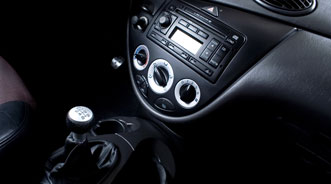J.D. Power: Design Problems Trigger Majority of Vehicle Interior Quality Issues

By subscribing, you agree to receive communications from Auto Remarketing and our partners in accordance with our Privacy Policy. We may share your information with select partners and sponsors who may contact you about their products and services. You may unsubscribe at any time.
WESTLAKE VILLAGE, Calif. –
J.D. Power and Associates discovered more than two-thirds of owner-reported new-vehicle interior problems are design-related issues rather than defects or malfunctions.
That finding came as J.D. Power revealed the 2011 U.S. Interior Quality and Satisfaction Study late last week.
The study also showed that owners report an average of 17.2 problems per 100 vehicles (PP100) regarding the vehicle interior, and 11.6 PP100 are a result of design issues such as features being difficult to understand or use, or controls or displays in a poor location.
J.D. Power indicated owners of domestic nameplate vehicles report the largest proportion of interior design problems (69 percent), compared with 66 percent among owners of Asian brand units and 64 percent among owners of European models.
Analysts believe design-related interior problems can have a considerable negative impact on overall interior satisfaction.
For example, they said satisfaction averages 8.1 on a 10-point scale among owners who report no interior design problems, but drops to 7.2 when at least one interior design problem is reported.
Subscribe to Auto Remarketing to stay informed and stay ahead.
By subscribing, you agree to receive communications from Auto Remarketing and our partners in accordance with our Privacy Policy. We may share your information with select partners and sponsors who may contact you about their products and services. You may unsubscribe at any time.
“The vehicle interior plays an important role in overall owner satisfaction with the vehicle, as well as with the initial purchase decision,” explained Allan Dix, research director of automotive product quality at J.D. Power.
“In fact, more than one-half of new-vehicle buyers cite interior comfort as one of the most important factors in choosing a vehicle,” Dix continued.
“As a result, it’s crucial to improve on interior design issues — such as difficulty using the center console or door locks — as these are issues that can really make a difference to the overall vehicle ownership experience,” he went on to say.
Dix also noted that a key issue with design-related problems is that they generally cannot be fixed — thus remain a problem throughout the life of the vehicle — while defect or malfunctions can usually be repaired.
Overall, J.D. Power determined interior quality improved by 1.6 PP100 to 17.2 PP100 in 2011 (a lower number indicates higher quality).
Of the top five most frequently reported problems within the interior, the study mentioned all five are design-related. They included:
—Material scuffs/soils easily.
—Cruise control difficult to use or controls in poor location.
—Cup holders difficult to use.
—Center console difficult to use.
—Door locks difficult to use or controls in poor location.
J.D. Power added problems related to the center console have increased from 2010.
The study also revealed interior design problems have a negative effect on loyalty and advocacy.
Among new-vehicle owners who report no interior design problems, J.D. Power learned 74 percent say they “definitely will" recommend the brand to others.
In comparison, the firm determined just 54 percent say the same when at least one interior design problem is experienced.
Similarly, analysts also stated nearly one-half of customers who report no interior design problems say they “definitely will” purchase or lease from the brand again, while just 29 percent who experienced at least one interior design problem say the same.
J.D. Power explained the 2011 U.S. Interior Quality and Satisfaction Study is meant to provide manufacturers and suppliers with quality and satisfaction information related to vehicle interiors.
New-vehicle owners are asked to rate the quality of their vehicle interior based on whether they experienced defects/malfunctions or design-related problems during the first 90 days of ownership.
Analysts noted the study was based on responses from more than 73,000 new-vehicle owners who purchased a 2011 model-year unit. The study was fielded between February and May.


